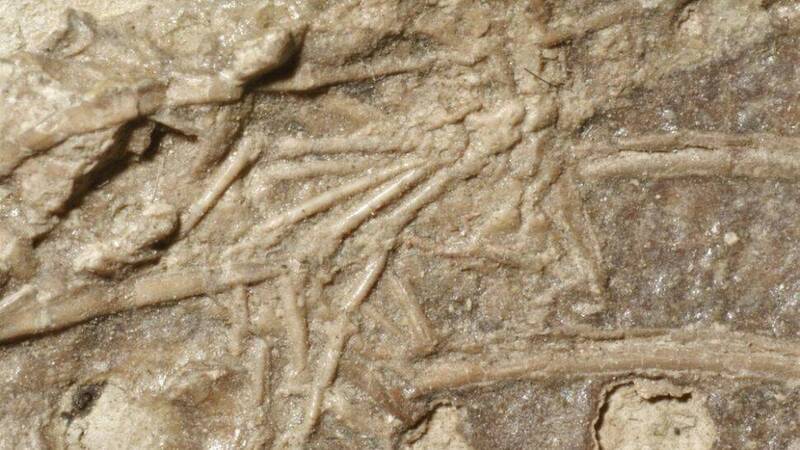Paleontologists say they have discovered a mammalian foot for the first time in a fossilized chest cavity of the predatory microraptor, "the first record of a dinosaur eating a mammal".
(Taken from Dr. Horne's research team at Queen Mary University of London)
[Compile Lu Yongshan/Comprehensive Report] Paleontologists say they have discovered a mammal's foot for the first time in the predatory Microraptor (microraptor) chest cavity fossil, "This is the first record of a dinosaur eating a mammal." .
The research was published in the Dec. 20 issue of the Journal of Vertebrate Paleontology.
Paleontologists say the 120-million-year-old foot bone found in the Microraptor's chest cavity is 0.39 inches (1 centimeter) long and belongs not to a human ancestor but to a small mammal, possibly a mouse or the like rodents.
Please read on...
The small, feathered Microraptor, the size of a crow or a kitten, lived in ancient forests in China between 125 million and 113 million years ago, and although they also had two legs, experts believe it may have been Fly, fly from tree to tree, hunt small animals.
Dr David Hone, lead author of the study, from Queen Mary University of London, said: "Instances of finding food in dinosaurs are very rare, so each instance is very important because it provides direct evidence of what dinosaurs ate .While this mammal is definitely not the ancestor of humans, we can look back and see that some of our ancient relatives were food for hungry dinosaurs."
"This study paints a picture of a horrific moment -- the moment when dinosaurs ate mammals, even if it wasn't as horrific as it was in the movie 'Jurassic Park,'" Horn said.
The specimen was first studied in 2000, but previous teams had failed to find remains of another mammal inside Microraptor, the researchers said.
Further analysis revealed that the prey was a mammal about the size of a mouse that lived on the ground and was not good at climbing.
Previous research has shown that other Microraptor fossils contained non-mammalian remains, such as birds, lizards or fish, in their stomachs.
Hans Larsson, a paleontologist at McGill University in Canada and a co-author of the study, said: "We already know that Microraptor fossils retain parts of the abdomens of fish, birds and lizards, and this new finding adds to their diet. The addition of a small mammal shows that these dinosaurs were not picky eaters, and knowing that they didn't specialize in eating any particular food was a big deal."
However, the research team pointed out that it is uncertain whether these microraptors directly preyed on these mammals, or found them dead and ate them.
Another co-author of the study, Dr Alex Dececchi of Matty Mountain College in South Dakota, USA, said: "The best part is that Microraptor was the size of your cat and should be It's an easy animal to keep and I'd be terrified if it got out of the house because it would hunt everything from the birds on the feeder to the mice on the fence or the fish in the pond."
